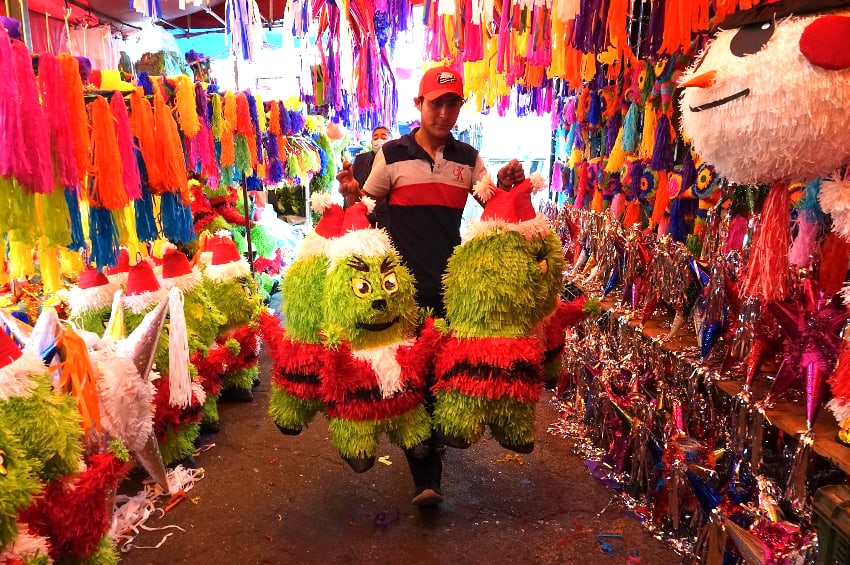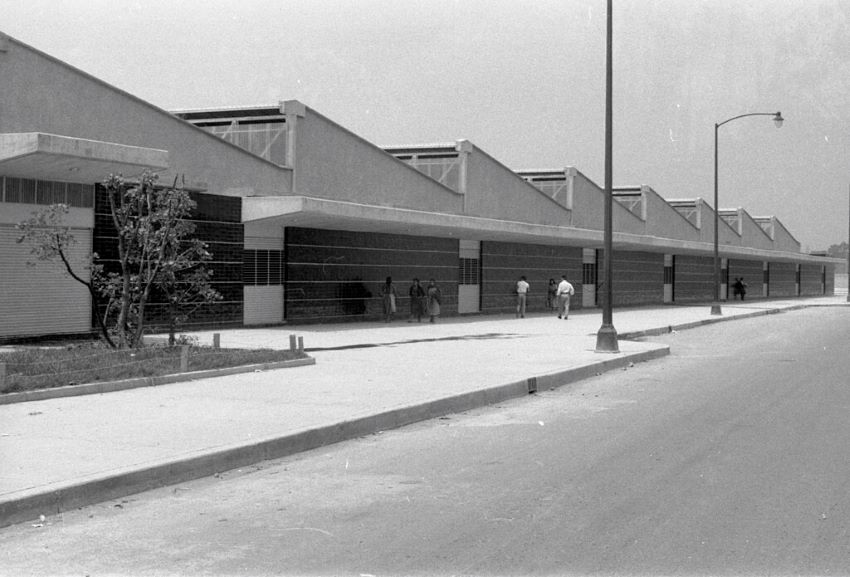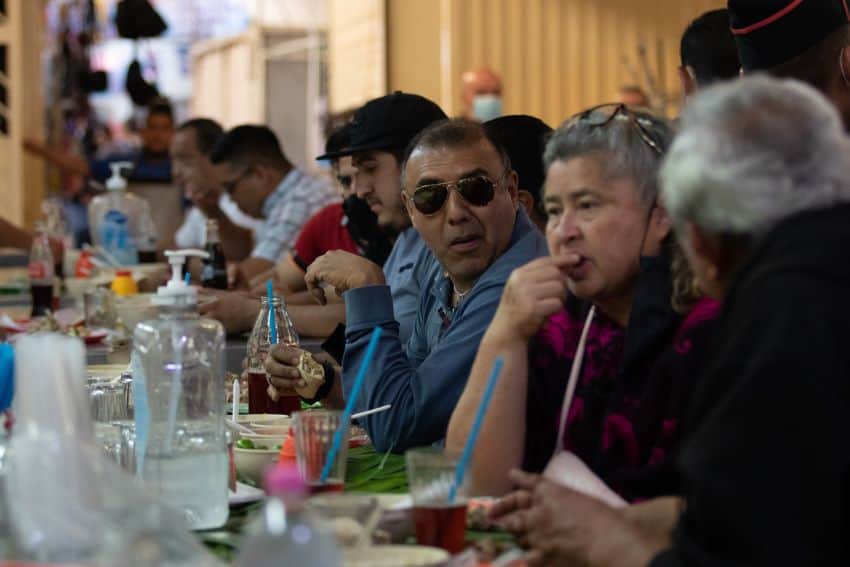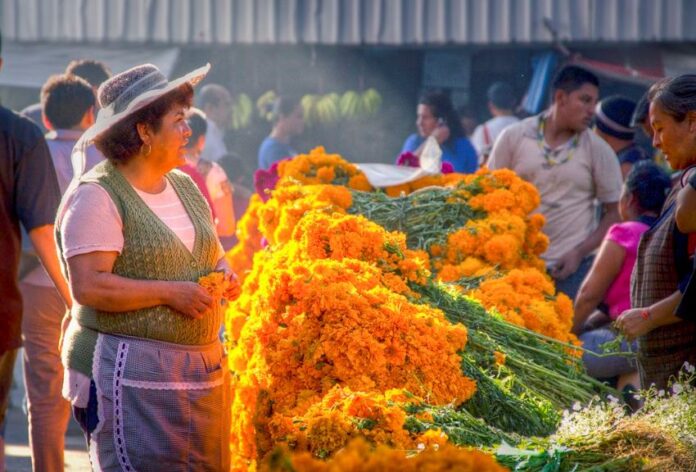My little apartment is regularly full of fresh flowers, a luxury that’s markedly more affordable in Mexico than it ever was in the U.S. I’ve been taking a stab at self-taught flower arrangements, but they never quite look right — always a bit lopsided or oddly proportioned. So when a friend invited me to a flower arranging class in the San Rafael neighborhood of Mexico City, I jumped at the chance.
The intimate workshop consisted of just seven women and one expert teacher. We gathered around an oval-shaped table, surrounded by buckets overflowing with fragrant blooms – vibrant roses, silvery eucalyptus, cheerful carnations, and dramatic dahlias – with empty vases waiting for our personal creations. The instructor casually mentioned that he had sourced everything early that morning from Mercado Jamaica. As I soon discovered, Mexico City’s most beloved flower market isn’t just a place to shop; it’s a cultural institution with a fascinating history. Here are nine things that make it special.

It’s Mexico City’s premier flower market
Mercado Jamaica stands as the leading flower market in Mexico City, offering thousands of flower and plant varieties sourced from across the country. These botanical gems come primarily from Puebla, Michoacán, Chiapas, Veracruz, the State of Mexico, and Oaxaca. While local florists comprise the majority of buyers, a significant portion of flowers are exported to the United States. In fact, 95% of Mexican flower exports are shipped directly to its northern neighbor. Beyond the staples (chrysanthemums, sword lilies, roses, and carnations dominate the Mexican flower market) Mercado Jamaica includes many indigenous and rare plants, establishing it as an exceptional botanical destination in the heart of the city.
It’s one of the city’s few destinations open 24 hours a day
Unlike most public markets, Mercado Jamaica never closes its doors. Operating 24 hours a day, seven days a week, this bustling marketplace accommodates both wholesale and retail customers at any hour. This round-the-clock service ensures that fresh flowers are always available, though the daytime hours typically draw the largest crowds and showcase the market at its most vibrant.
A network of jobs stems from Mercado Jamaica
Mercado Jamaica houses approximately 1,150 vendors across three main warehouses or “naves.” About 40% of sellers offer loose flowers, 25.5% provide flower arrangements, and 4.3% specialize in flower pots and accessories. The remaining vendors offer a diverse range of goods including live plants, vegetables, butcher items, and groceries, in the fashion of a typical Mexican city market. Just as flowers aren’t the only product, Mercado Jamaica contributes to a broader employment outlet for both locals and out-of-towners. Floriculture in Mexico has created at least 250 thousand direct jobs, and nearly one million indirect jobs, much of which is concentrated in the most rural swaths of the country. It’s also a significant outlet for ladies – according to SADER, 60% of flower production is women-run.
The market is one of the oldest in the city…

The geographical area of Mercado Jamaica has served as a trading hub since at least the year 1500, as documented in historical codices. During pre-Hispanic times, it was strategically located on the eastern shore of Lake Xochimilco and was known for its chinampas. Canoes and barges transporting goods to the main Tlatelolco market would stop here to trade. When Mexico City’s lakes and canals were eventually drained, what began as a water-based commerce system transitioned to land, evolving with the changing landscape of the Valley of Mexico.
…but the modern look was unveiled 68 years ago
The Mercado Jamaica we recognize today was officially inaugurated on September 23, 1957, as part of a major urban modernization initiative. This project, led by President Adolfo Ruíz Cortines and Mexico City’s regent Ernesto P. Uruchurtu, aimed to improve public infrastructure and included the construction of other major markets like Sonora and La Merced. The inauguration date was chosen to coincide with the festival of the Virgen de las Mercedes, the patron saint of local markets, honoring the market’s community traditions.
It’s architecturally significant
The market was designed by renowned Mexican architects Félix Candela, Pedro Ramírez Vázquez, and Rafael Mijares, pioneers of modern Mexican architecture. Covering 36,000 square meters, the original design featured distinctive concrete canopies, also known as “sombrillas,” at the exterior to provide shade and protection. The open, modular layout is organized into three large halls and allows for efficient air circulation and natural light. Even though the original concrete canopies were damaged in the 1985 earthquake and replaced with metal structures, the market remains an architectural landmark in Mexico City.
Visitors can eat, too

Beyond the endless abundance of multicolored buds and accessories, Mercado Jamaica houses a dedicated food section. Jamaica Comidas is overflowing with equally colorful, deliciously authentic Mexican cuisine and fresh produce. The huaraches are notably famous. Legend has it, doña Carmelita (Carmen Gómez Medina) was selling sopes and tlacoyos near Calzada de La Viga in the 1930s, when suddenly a customer requested a masa cake large enough to hold meat. This inspired Carmelita to create an elongated, bean-filled patty resembling a “huarache,” or an indigenous sandal. She’d top the 30-centimeter long cake with grilled meats, eggs, cheese, and nopales, and garnish it with salsa, crema, and avocado, starting a culinary trend that continues to this day.
The Christmas party capital of Mexico City
No, there’s not an official posada at Mercado Jamaica, but anyone tasked with planning one might want to carve out a day to shop here. Peruse an extensive selection of rainbow-hued piñatas, available year-round but particularly embellished during the Christmas season. Stock up on Christmas trees imported from Canada and a vast array of decorations, from twinkling lights to nativity scenes. This seasonal specialization makes the market a go-to destination for various celebrations throughout the year, including birthdays, weddings, and traditional Mexican holidays.
It’s so easy to get to, there’s no excuse not to go
Located in the Jamaica neighborhood of the Venustiano Carranza borough, east of downtown Mexico City, the market is easily accessible via public transportation. The Jamaica Metro station on Line 9 exits directly beneath the market, while Line 4 is a short walk away. A word to the wise – while its location is convenient, its sprawling layout of numerous lanes and sections is less an organized grocery store experience and more of a maze. This labyrinthine quality adds to its charm, though first-time visitors are often advised to purchase items when they see them, as retracing steps can be challenging at best, impossible at worst.
Practical information
Hours: Open 24 hours, every day
Getting there: Take Metro Line 9 or Line 4 to Jamaica station; the Line 9 exit is directly under the market
Location: Jamaica neighborhood, Venustiano Carranza borough, east of downtown Mexico City
Bethany Platanella is a travel planner and lifestyle writer based in Mexico City. She lives for the dopamine hit that comes directly after booking a plane ticket, exploring local markets, practicing yoga and munching on fresh tortillas. Sign up to receive her Sunday Love Letters to your inbox, peruse her blog, or follow her on Instagram.
